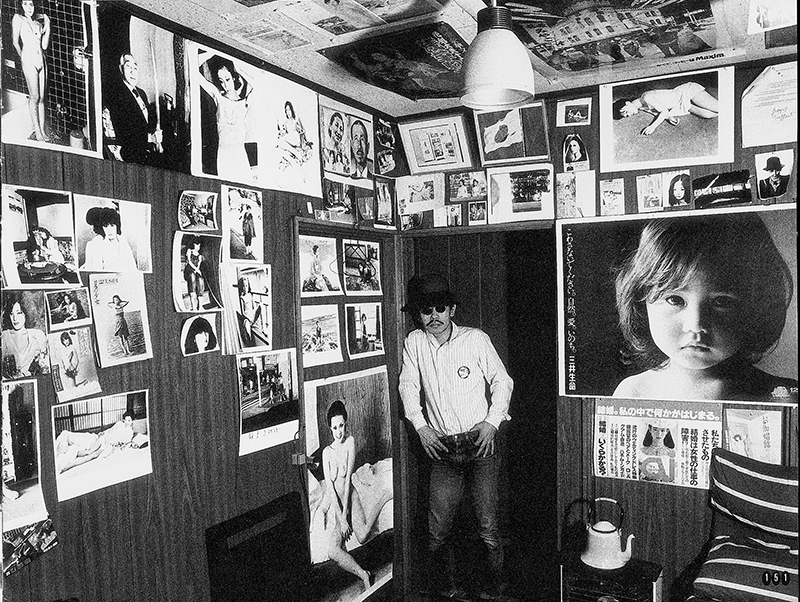
(English version included below)
Une leçon de photo intégrale par Nobuyoshi Araki
La leçon de photo intégrale de Nobuyoshi Araki, publiée fin 2018 par l’Atelier Akatombo (première traduction mondiale par Dominique et Frank Sylvain), se dévore avec boulimie : la même que celle avec laquelle le photographe vit en photos, pour les photos, à travers les photos.
Mais ce n’est peut-être pas tant une leçon de photographie qu’une leçon de vie que nous donne Araki. Celle d’un maître exubérant, aussi sage que fou, qui laisse ses pulsions diriger sa créativité. De cette lecture, on ressort heureux, comme après un long moment de liberté, où tout semble permis, où chaque image trouve sa place dans un parcours de vie dont son auteur ne cache (presque) rien.
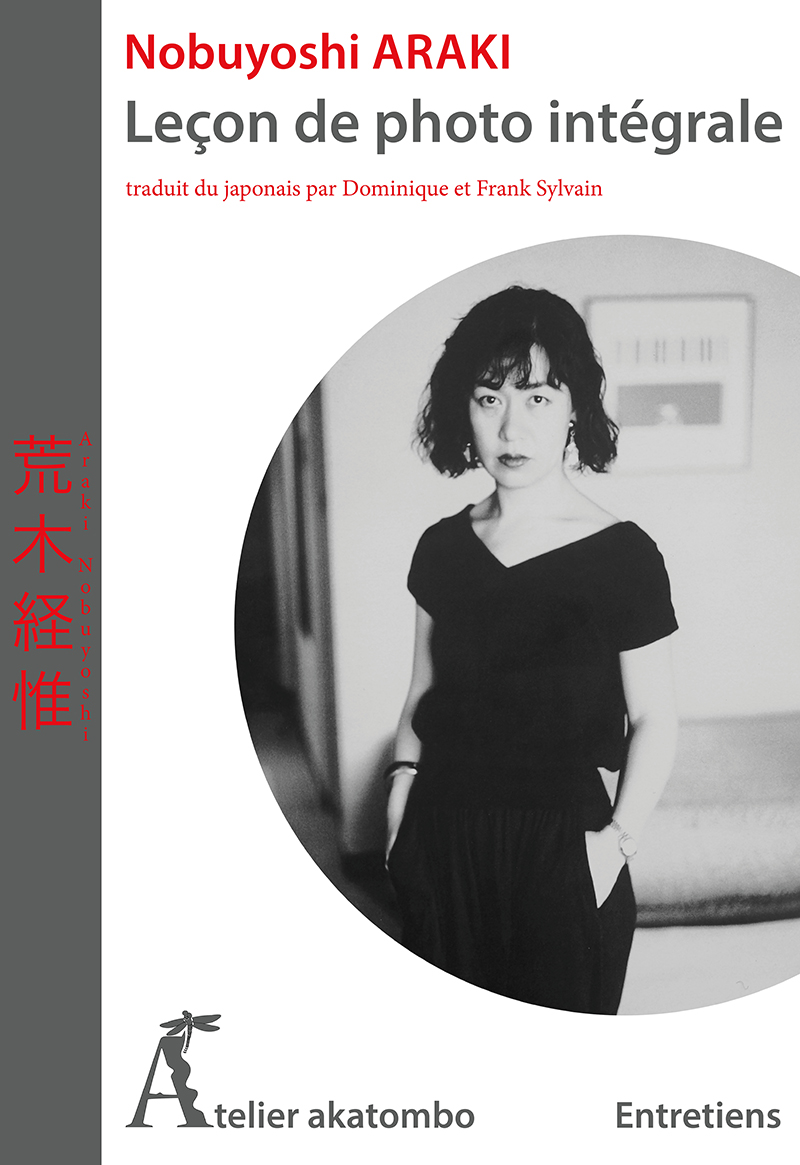
Mais puisque le titre annonce une leçon de photographie, qu’apprendra le jeune pratiquant qui veut économiser le prix d’un stage ou d’une masterclass ? Y découvrira-t-il les secrets d’Araki et de sa fièvre créatrice ? Pas vraiment, même si celui-ci n’hésite pas à détailler les processus chimiques qui ont produit des images aussi puissantes que celles-ci :
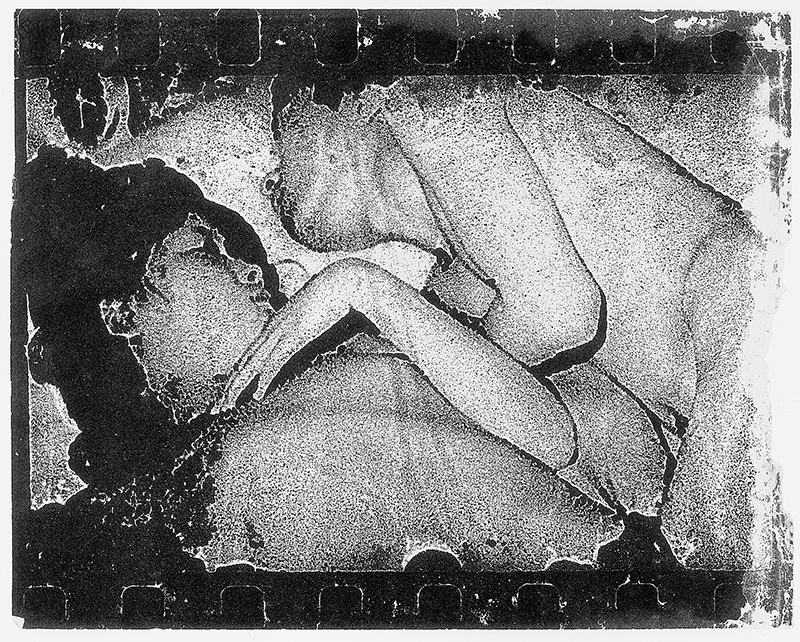
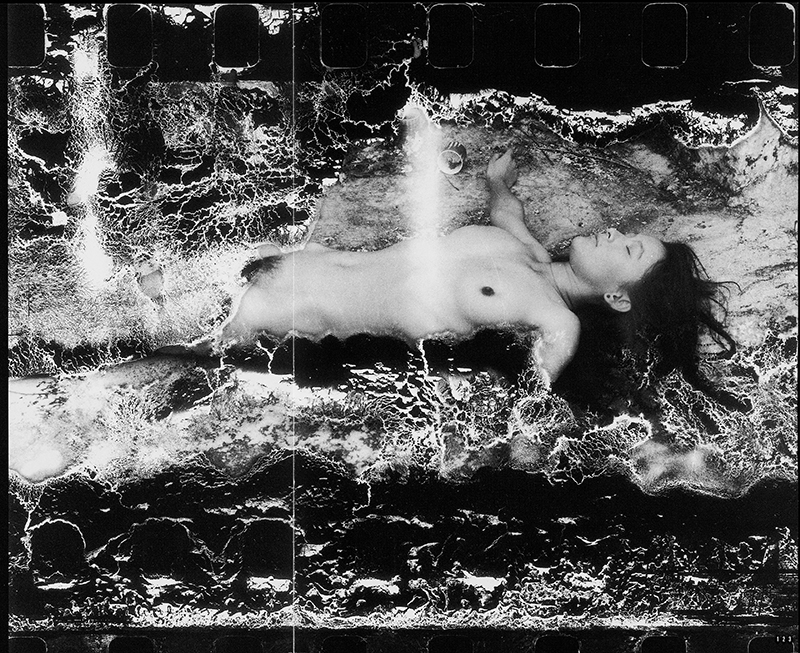
Mais ce sera presque tout pour les secrets techniques et les conseils pratiques. Parce que les principales leçons d’Araki résident plus dans les moteurs intimes de la création et dans l’approche de ses sujets, c’est-à-dire dans un rapport d’échange avec le médium photographique : ce qu’il lui apporte en même temps que ce que la photographie lui apporte. Ainsi ne trouvera-t-on dans le livre qu’une seule analyse du cadrage. Mais quelle analyse ! Puisqu’Araki confie que c’est le fait de photographier la dépouille de son père puis, plus tard, de sa mère, qui lui a appris le cadrage :
C’est à ce moment-là que j’ai appris à ne pas prendre de photo que je ne voudrais pas voir ensuite, qui me serait pénible, qui serait pénible à regarder pour la personne prise en photo (…) C’est cela que ça m’a appris, le cadrage. En fait, c’est comme si nous étions testés par la personne d’en face. Elle est déjà passée dans l’autre monde, alors comment lui montrer notre amour, comment lui transmettre celui-ci ? De cette façon-là, ce visage, je veux l’oublier, je ne veux pas le mettre, je ne veux pas le photographier. C’est avec ce sentiment que je prends la photo. Un peu plus loin, à propos du portrait funéraire de sa mère, il évoquera la manière la plus digne de la photographier.
Sentiment, dignité, gentillesse, combien de fois ces mots reviennent dans la bouche d’Araki. La voilà, la leçon : être dans la relation avec ce qui est photographié avant d’être dans une construction artistique. Investir les moments photographiques avec tout son être, ses souvenirs d’enfance, ses désirs et ses pulsions tout en acceptant la légèreté de l’instant.
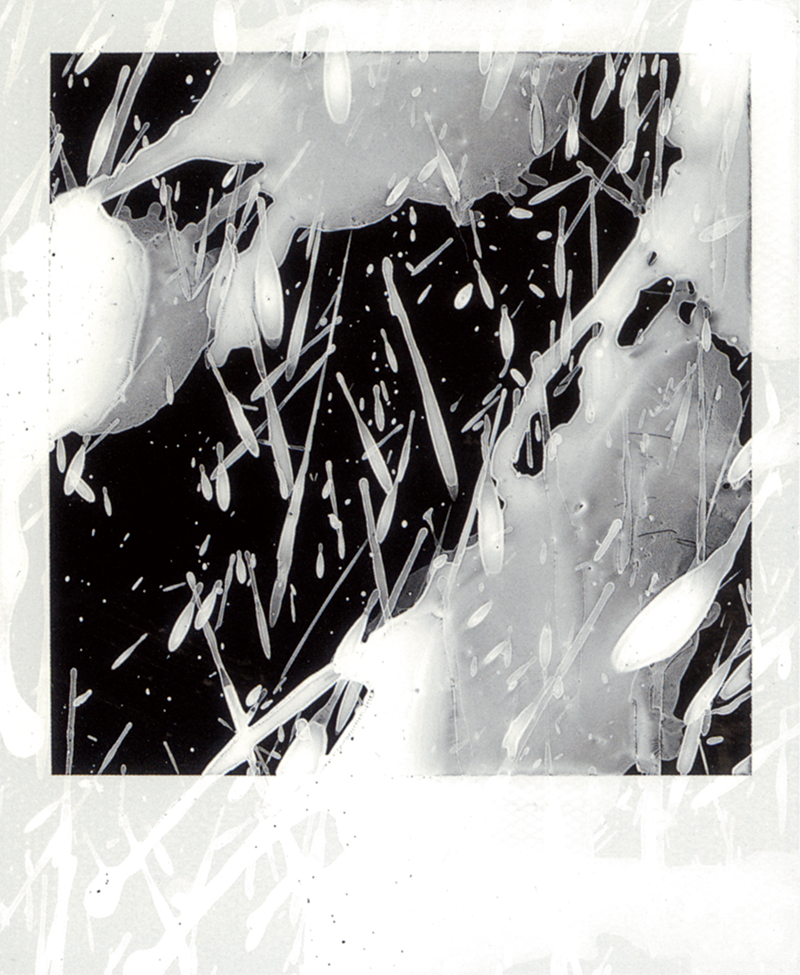
Araki s’insurge contre une certaine photographie contemporaine qu’il juge trop cérébrale. Lui, il « pense avec le doigt » : celui du déclencheur, certes, mais comment ne pas lire dans cette déclaration un clin d’oeil à l’érotisme à l’oeuvre dans beaucoup de ses prises de vue. Ainsi sa lecture de cette photographie de sa chatte adorée, Chiro, sautant dans la neige, quelque temps après le décès de la femme du photographe, plongé dans une profonde phase d’inactivité :
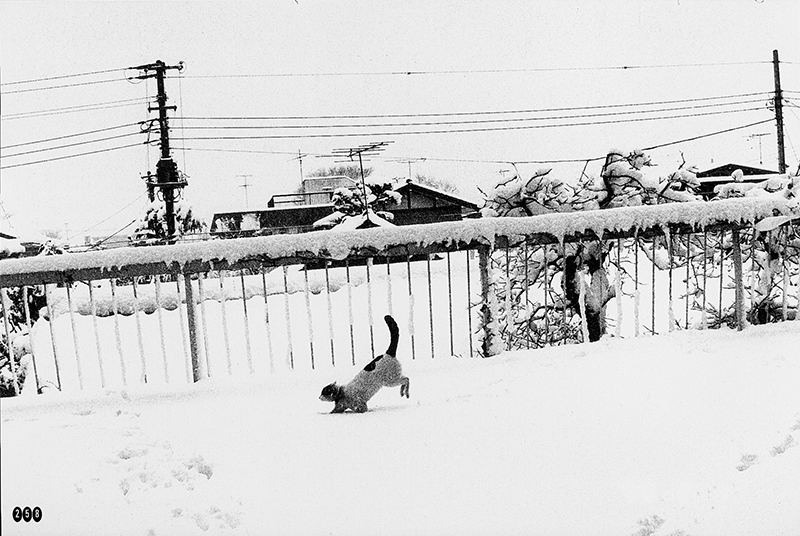
« Comme ça n’allait pas, j’ai ouvert la fenêtre et Chiro s’est précipitée dans la neige amoncelée sur la terrasse et s’est mise à sauter. Sans que je l’encourage. Comme pour dire « Bandons ». D’ailleurs on le voit bien en regardant sa queue. »
Tout Araki est là : entre assurance (parfois exagérée) et désinvolture (parfois feinte ?), un maître zen qui sait exploiter sa folie.
Et qui enfin, en guise d’ultime enseignement, nous offre une consolation :
« Quand quelqu’un que l’on aime s’en va, on devient meilleur en photo. »
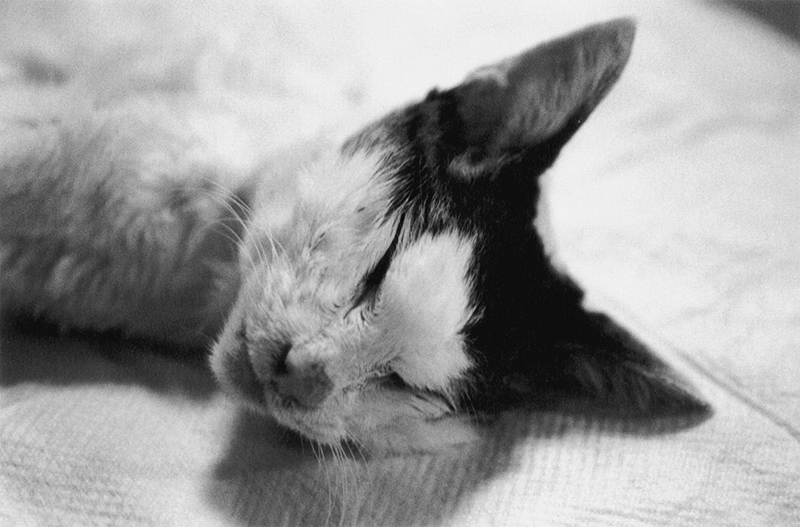
Il faut noter le formidable travail éditorial de l’ouvrage, riche de plus de 300 photos et détaillant chaque mouvement photographique ou chaque nom de photographe par une notice explicative synthétique d’une remarquable pédagogie.
Découvrir la page FB de l’Atelier Akatombo
The photography lesson of a crazy Zen master : Nobuyoshi Araki.
Nobuyoshi Araki’s complete photo lesson, published at the end of 2018 by L’Atelier Akatombo, is eaten with bulimia: the same as the one with which the photographer lives in photos, for the photos, through the photos.
But maybe it’s not so much a lesson in photography as a lesson in life that Araki gives us. That of an exuberant master, as wise as he is crazy, who lets his impulses drive his creativity. From this reading, we emerge happy, as if after a long moment of freedom, where everything seems allowed, where each image finds its place in a life course from which its author hides (almost) nothing.
But since the title announces a photography lesson, what will the young practitioner learn who wants to save the price of a workshop or a masterclass? Will he discover Araki’s secrets and his creative fever? Not really, even if he doesn’t hesitate to detail the chemical processes that have produced images as powerful as these:
But that will be almost all for technical secrets and practical advice. Because Araki’s main lessons lie more in the intimate motors of creation and in the approach of his subjects, that is, in an exchange relationship with the photographic medium: what he brings to it at the same time as what photography brings to it. Thus, only one analysis of the framing will be found in the book. But what an analysis! Since Araki confides that it was the fact of photographing the remains of his father and later his mother that taught him how to frame them.
« That’s when I learned not to take a picture that I wouldn’t want to see later, that would be painful for me, that would be painful for the person taking the picture to look at (…) That’s what it taught me, framing. In fact, it is as if we were being tested by the person opposite. She has already passed into the other world, so how can we show her our love, how can we transmit it to her? In this way, this face, I want to forget it, I don’t want to put it on, I don’t want to photograph it. It is with this feeling that I take the picture. » A little further on, about his mother’s funeral portrait, he will talk about the « most worthy way to photograph her ».
Feeling, dignity, kindness, how many times these words come back into Araki’s mouth. Here it is, the lesson: to be in the relationship with what is photographed before being in an artistic construction. To invest photographic moments with all his being, his childhood memories, his desires and his impulses while accepting the lightness of the moment.
Araki rebels against a certain contemporary photography that he considers too cerebral. He « thinks with his finger »: the one of the trigger, certainly, but how can we not read in this statement a nod to the eroticism at work in many of his shots. So his reading of this photograph of his beloved pussycat, Chiro, jumping in the snow, some time after the death of the photographer’s wife, plunged into a deep phase of inactivity:
« When things didn’t go well, I opened the window and Chiro rushed into the snow on the terrace and started jumping. Without my encouragement. As if to say « Let’s get hard ». Besides, you can see it when you look at his tail. »
All Araki is there: between self-confidence (sometimes exaggerated) and casualness (sometimes feigned?), a Zen master who knows how to exploit his madness.
And finally, as a last teaching, it offers us a consolation:
« When someone you love dies, you get better in photography. »
